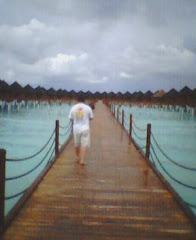 Heading back to where the people are, I came across a sun dial.
Heading back to where the people are, I came across a sun dial.人が居る場所に戻ったら日時計を発見。
 There is an area of Yoyogi Park and Meiji Jingu Shrine that's fenced off to the public, it is land dedicated to a bird sanctuary.
There is an area of Yoyogi Park and Meiji Jingu Shrine that's fenced off to the public, it is land dedicated to a bird sanctuary.公園内で人が入れない場所もある。東京の大都会の中に野鳥の誘致園がある。
 Another view of part of the bird sanctuary.
Another view of part of the bird sanctuary.野鳥の誘致園はバードサンクチュアリでも呼ばれてます。
 The species of birds you are most likely to see. I'm not going to bother finding out what the English names are - the pictures should suffice.
The species of birds you are most likely to see. I'm not going to bother finding out what the English names are - the pictures should suffice.サインに書いた通り良く訪れる鳥達。
 Sign explaining why the bird sanctuary was created. I'm not going to translate the entire sign.
Sign explaining why the bird sanctuary was created. I'm not going to translate the entire sign. Another interesting piece of art. This is called "Quetzacoatl" by Frederico Silva. Presented as a gift to Japan from the Republic of Mexico.
Another interesting piece of art. This is called "Quetzacoatl" by Frederico Silva. Presented as a gift to Japan from the Republic of Mexico.またアートの作品発見。これは「ケツァカアトル」。作者はフェデリーコ・シルバ。メキシコが日本に贈った物です。
 I love checking out the various monuments and art pieces in public parks. This one is called "Shiawase no Zo" which translates to "The Statue of Happiness".
I love checking out the various monuments and art pieces in public parks. This one is called "Shiawase no Zo" which translates to "The Statue of Happiness".公園内で記念碑やアートを見るのが楽しい。これは「しあわせの像」。
 Another interesting bit of history in Yoyogi Park. This area is a sample garden created in 1964 when the Olympics were held in Tokyo. Read the sign for more details (even though I'm not sure if you can enlarge the picture).
Another interesting bit of history in Yoyogi Park. This area is a sample garden created in 1964 when the Olympics were held in Tokyo. Read the sign for more details (even though I'm not sure if you can enlarge the picture).代々木公園にいろんな歴史がありますね。東京オリンピック記念の樹木見本園。詳しいことはサインを読んで下さい (写真がもっと大きく出来るかどうか分かりませんけど)。
 Trees from around the world that were planted during the 1964 Tokyo Olympics.
Trees from around the world that were planted during the 1964 Tokyo Olympics.現在の樹木見本園。
 There is more history to Yoyogi Park than I thought. The area around this park was also used as the 1964 Olympic's Athlete's Village. The athletes stayed in little bungalows like this. This is one of the remaining buildings that was used by the athletes from the Netherlands. Short translation of the sign below.
There is more history to Yoyogi Park than I thought. The area around this park was also used as the 1964 Olympic's Athlete's Village. The athletes stayed in little bungalows like this. This is one of the remaining buildings that was used by the athletes from the Netherlands. Short translation of the sign below. 上の写真に関する説明。
上の写真に関する説明。It was time to leave the park and head towards Meiji Jingu Shrine where one of the Aomori Prefecture's Nebuta float is being displayed.
公園をあとにして、次は明治神宮を目指す。入口の前に青森県のねぶたが展示されてるのでそれを見に行った。
 Aomori Prefecture Nebuta Float / 青森県のねぶた
Aomori Prefecture Nebuta Float / 青森県のねぶた

この写真を見るとねぶたの大きさがちょっと分かると思う。
Time to check out Meiji Jingu Shrine and the Aomori Prefecture Food Booth Court.
これから明治神宮と青森産の屋台村を見に行く予定。
To be continued...
つづく。。。

.jpg)



No comments:
Post a Comment